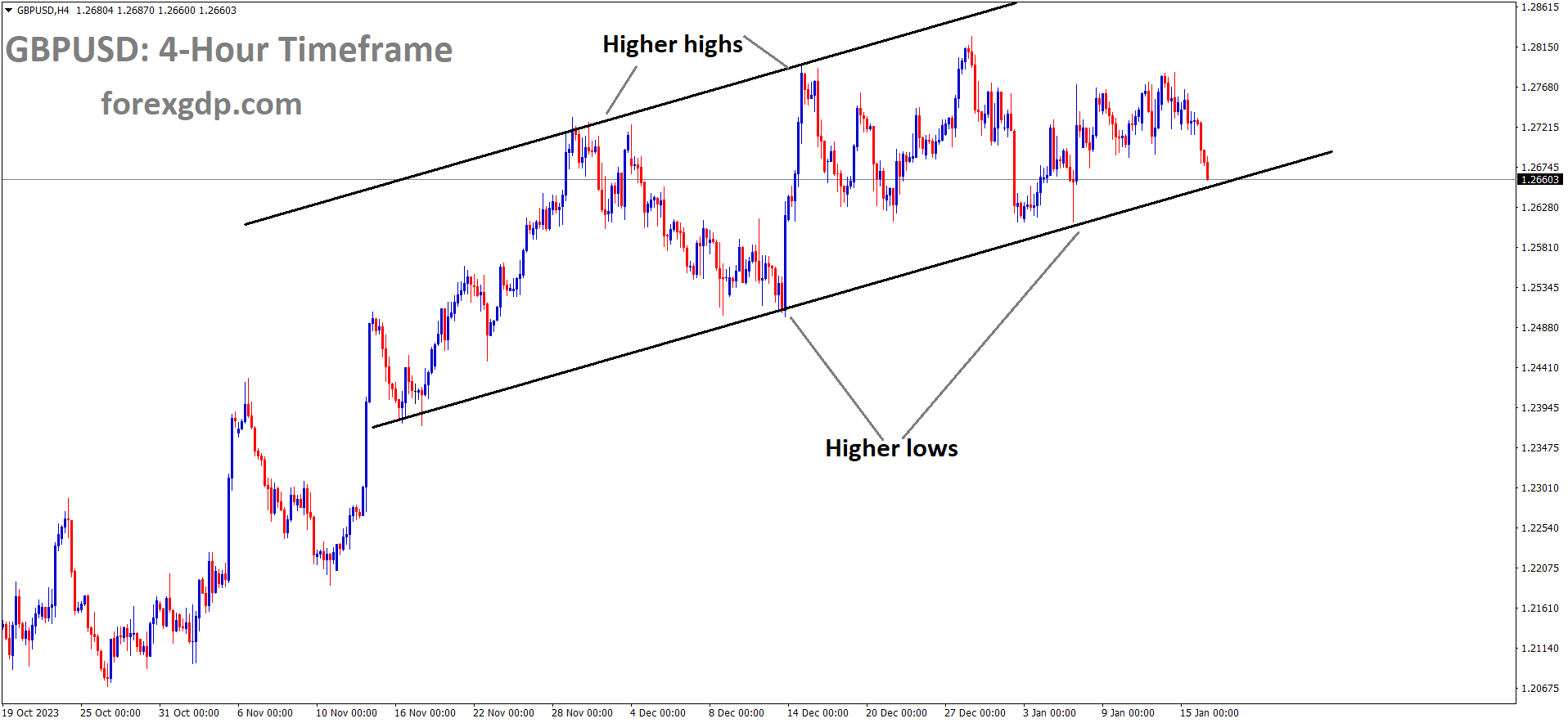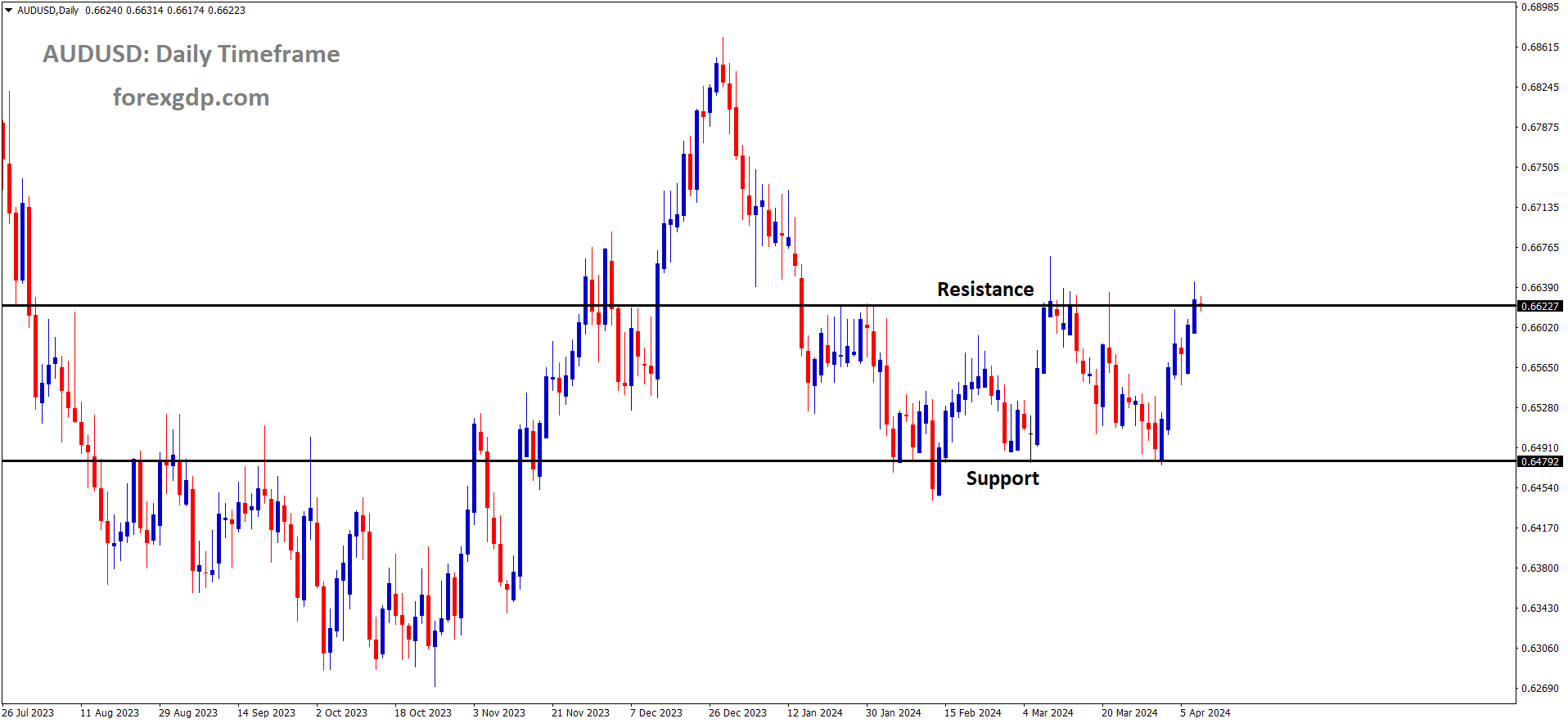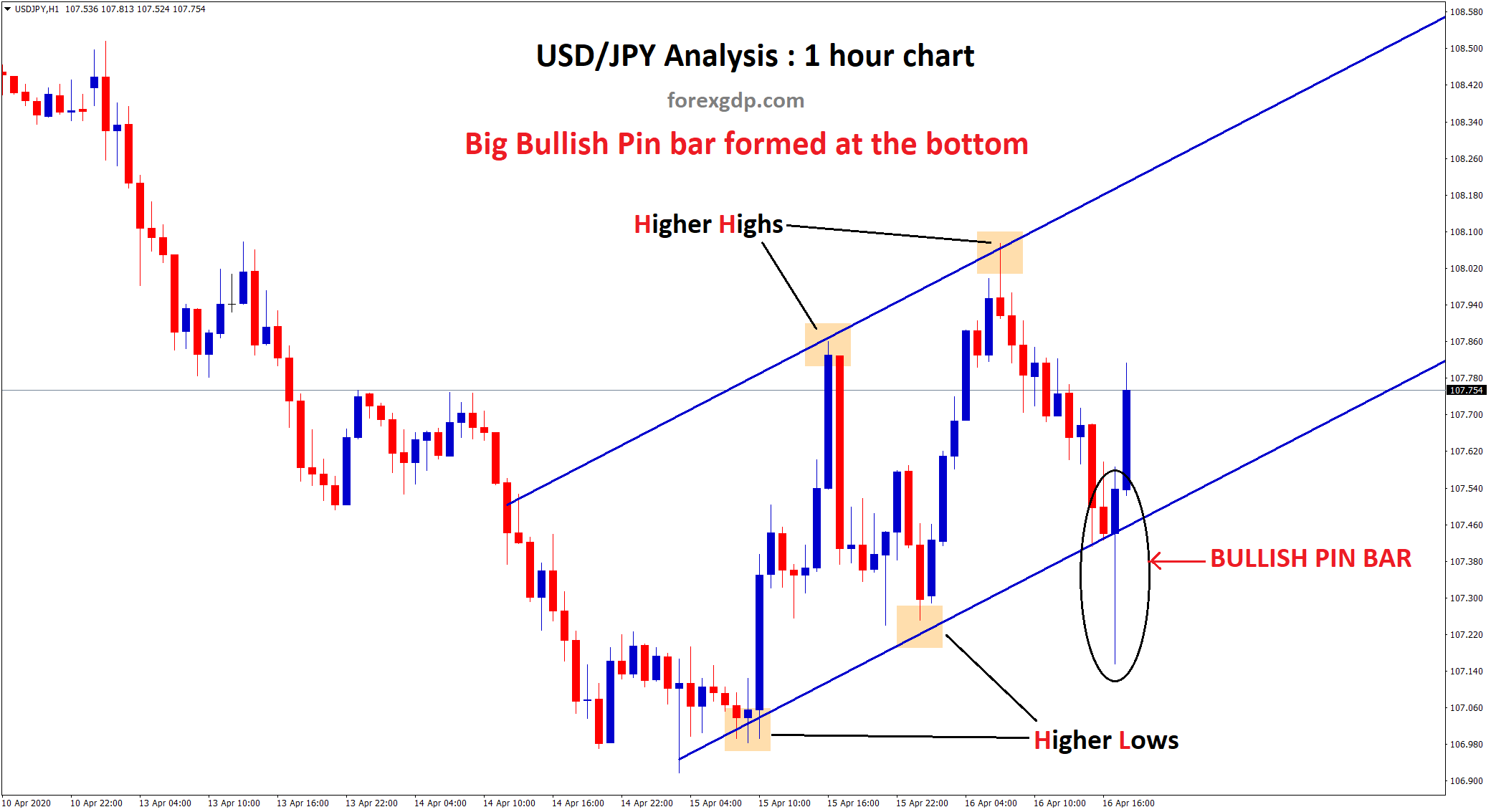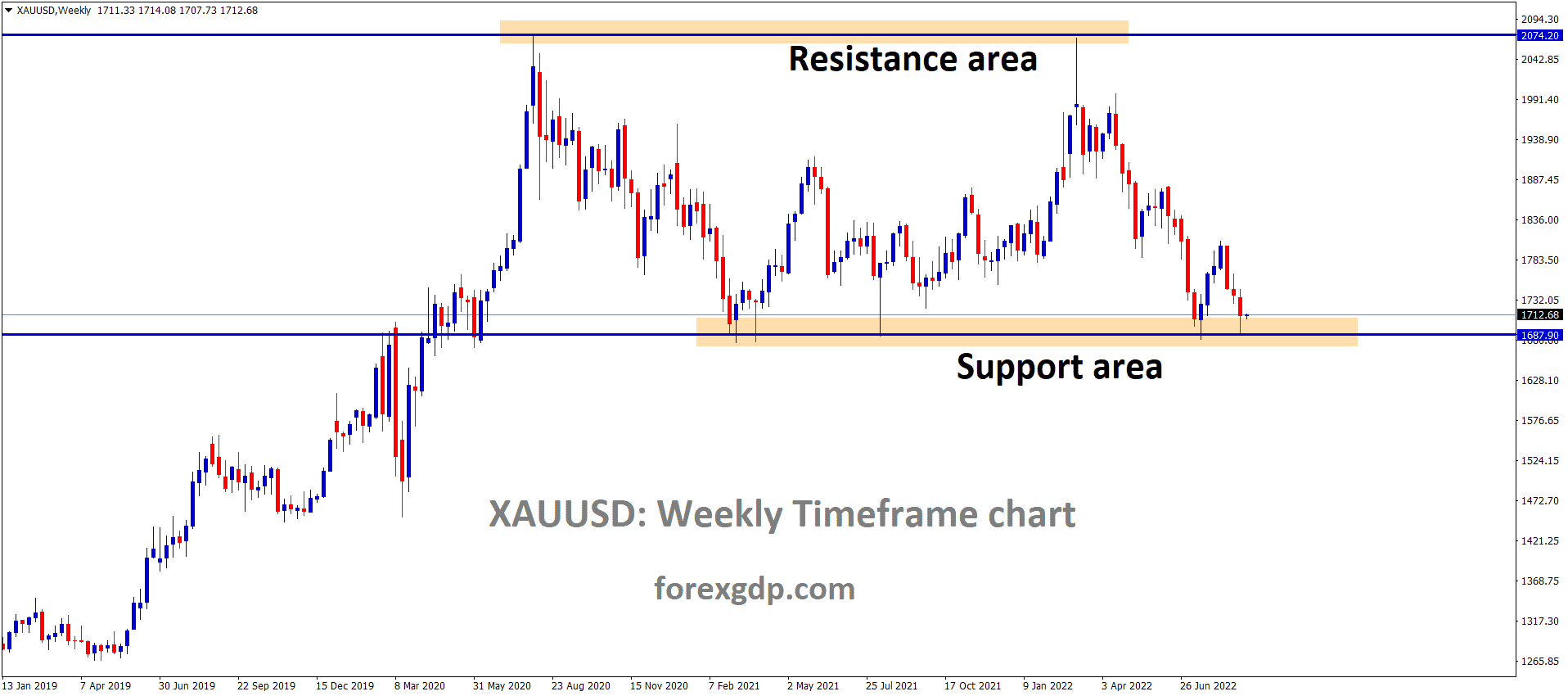GBPUSD Analysis:
GBPUSD is moving in an Ascending channel and the market has reached the higher low area of the channel
The unemployment rate in the UK stood at 4.2% according to third-quarter data. Jobless benefits increased to 11.7K in December, compared to just 0.60K in November. Additionally, there was a notable employment change, with an increase of 73K in November, surpassing the 50K gain recorded in October

The Office for National Statistics released data on Tuesday indicating that the United Kingdom’s ILO Unemployment Rate remained steady at 4.2% for the three months leading up to November. This figure was in line with market expectations for the November quarter. Furthermore, the report revealed that the number of individuals claiming jobless benefits increased by 11.7K in December, a notable contrast to the 0.6K increase seen in November. Additionally, the British Employment Change data for November showed a gain of 73K, surpassing the 50K increase observed in October.
In terms of wage trends, Average Earnings excluding Bonuses in the UK recorded a 6.6% year-on-year growth in November, which was slightly lower than the 7.2% increase reported in October. Market expectations had predicted a 6.6% growth rate. Meanwhile, Average Earnings including Bonuses grew by 6.5% during the same period, compared to the 7.2% increase in October and an expected 6.8% rise.
GOLD Analysis:
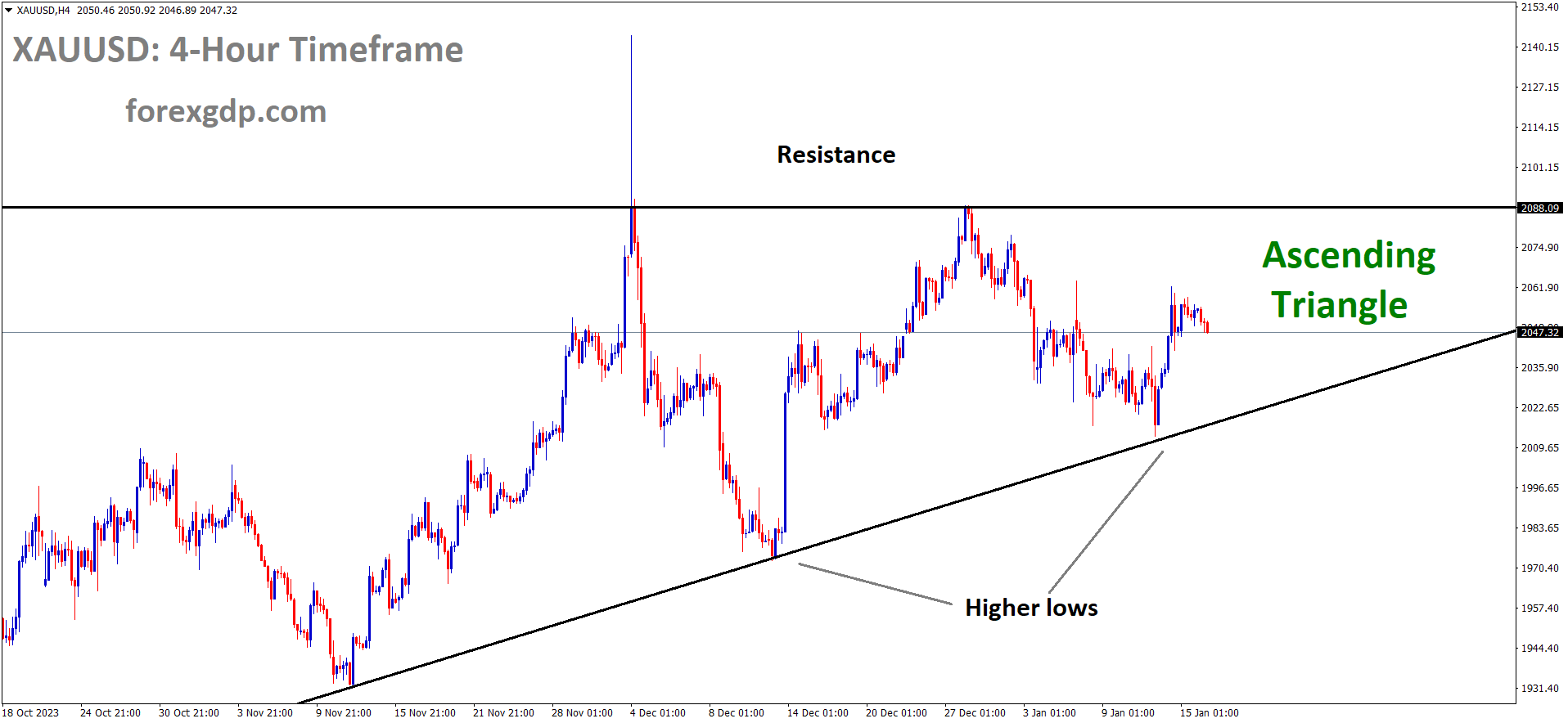
XAUUSD Gold price is moving in an Ascending triangle pattern and the market has rebounded from the higher low area of the pattern.
Gold prices have remained above the $2050 mark, primarily driven by ongoing geopolitical tensions in the Red Sea region involving Houthi rebels, the United States, and the United Kingdom. These conflicts have also contributed to the strengthening of the US dollar.
The escalating geopolitical tensions in the Red Sea and the prevailing risk-off environment are favoring safe-haven assets like gold. Currently, the price of gold is trading at $2,055, reflecting a 0.06% gain for the day. Meanwhile, the US Dollar Index, which measures the USD’s value against a weighted basket of currencies used by US trade partners, has continued its consolidation trend since the start of the year, hovering around 102.60. Additionally, Treasury yields have ticked lower, with the 10-year yield currently at 3.95%.

The market has already priced in an 86% probability of a rate cut by March, with the overall expected easing cycle for 2024 standing at approximately 166 basis points, compared to the 75 bps projected by the Fed dot plot. However, Atlanta Federal Reserve President Raphael Bostic, speaking over the weekend, emphasized the need to keep rates unchanged at least until summer to prevent inflation from resurging. He stressed the importance of ensuring that inflation consistently returns to the 2% target and warned against policymakers rushing into easing too quickly.
Furthermore, on Monday, Houthi rebels launched a missile that struck a US-owned ship just off the coast of Yemen in the Gulf of Aden. This occurred shortly after they had fired an anti-ship cruise missile toward an American destroyer in the Red Sea. These developments are likely to further bolster the performance of gold, as it is considered a safe-haven asset that investors often turn to during periods of uncertainty and geopolitical tension. Looking ahead, the situation regarding geopolitical tensions in the Middle East remains a key focus. Later on Tuesday, market participants will closely monitor the US NY Empire State Manufacturing Index for January, as well as a speech by Fed’s Waller.
SILVER Analysis:
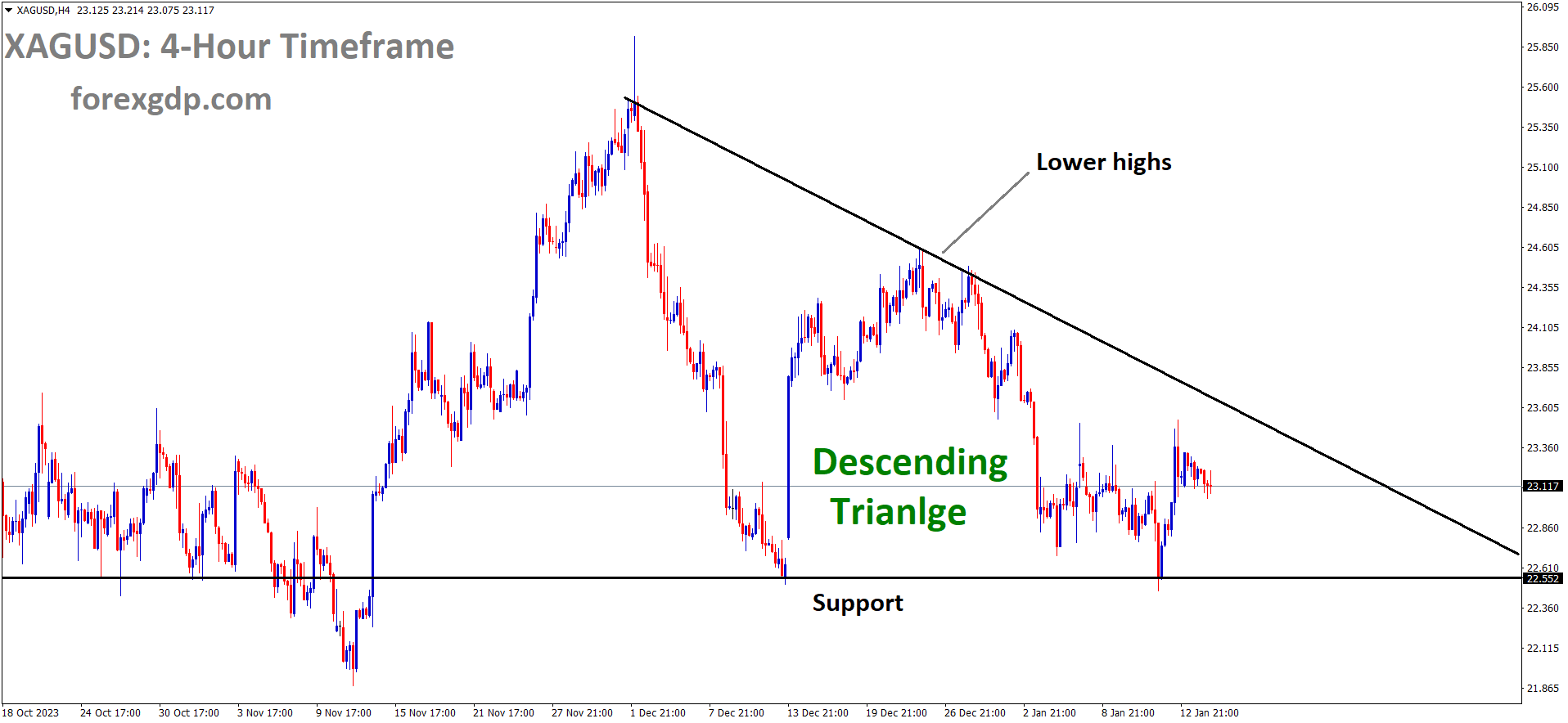
XAGUSD Silver price is moving in the Descending triangle pattern and the market has rebounded from the horizontal support area of the pattern
Raphael Bostic, President of the Atlanta Fed, has stated that inflation is expected to decelerate, aiming to reach the 2% target in the United States. Rate cuts will not be considered until inflation falls below the target level. This announcement bolstered the US Dollar’s position in the market.
Over the weekend, Atlanta Federal Reserve President Raphael Bostic expressed concerns about potential fluctuations in inflation if policymakers were to implement interest rate cuts prematurely. He cautioned that the descent of inflation toward the central bank’s 2% target was expected to slow in the coming months, as reported by the Financial Times.

There is even a risk that inflation might stall altogether. Bostic emphasized the importance of ensuring that inflation firmly and consistently returns to the 2 percent target. He warned against a scenario where inflation starts oscillating up and down like a see-saw, as such volatility would erode confidence in the economy’s direction.
Bostic also noted that the markets have been attentive to the central bank’s communications, which have been clear regarding their projections for rate cuts. Additionally, he expressed interest in monitoring the potential impact of the Middle East conflict and attacks on container ships on businesses’ cost structures in his district.
While emphasizing the Federal Reserve’s commitment to its employment mandate, Bostic acknowledged that there were signs of weakness in certain segments of the economy. He also mentioned that, as of now, there have been no indications in the money markets suggesting a shortage of ample reserves. However, he recognized the possibility that such signals could emerge in the future, prompting the need for further consideration.
USDCAD Analysis:
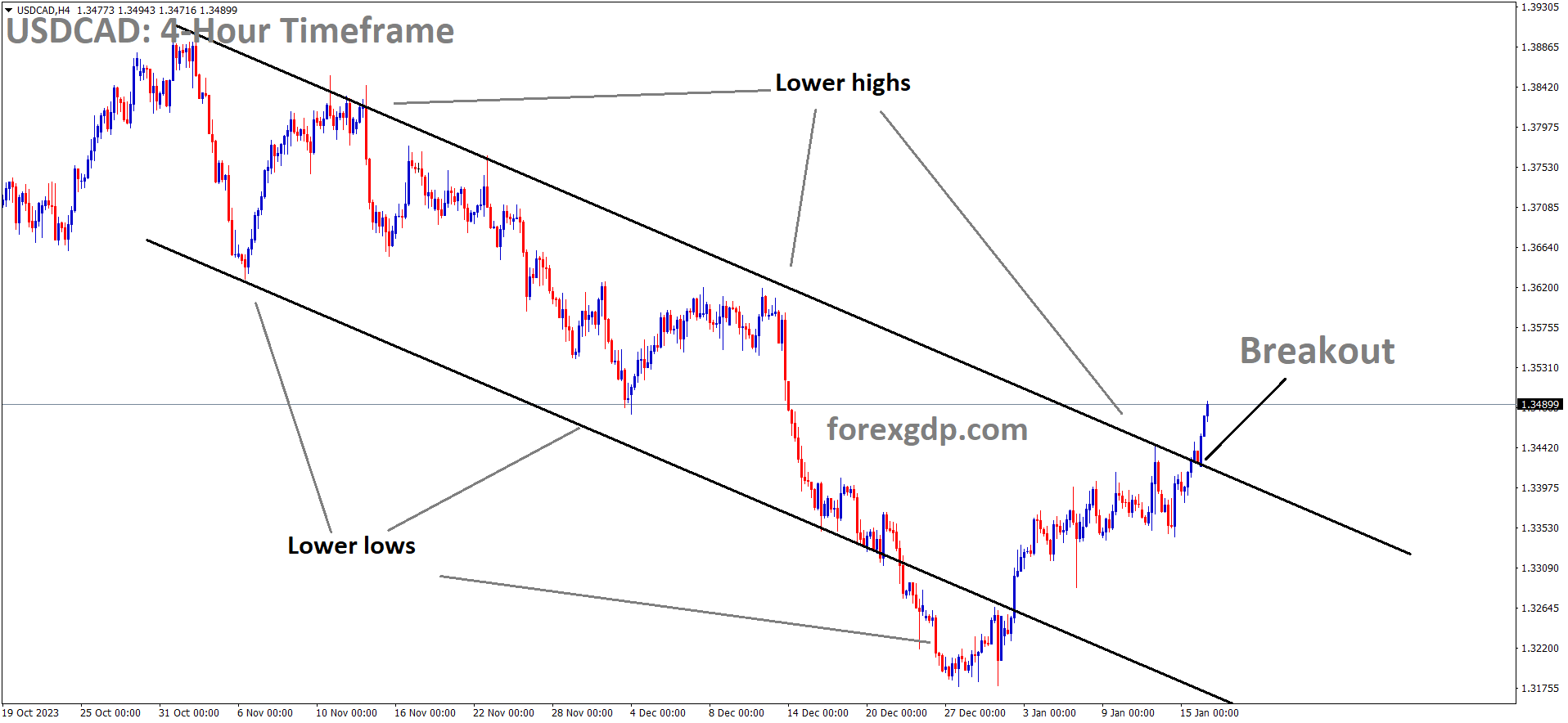
USDCAD has broken the Descending channel in upside
It is anticipated that the Canadian Consumer Price Index (CPI) for December will show a 3.3% rise, up from the 3.1% figure reported in November. The Canadian Dollar has weakened in comparison to the US Dollar due to ongoing conflicts involving Houthi Rebels and the United States, as well as the United Kingdom.
Canada is poised to release significant inflation-related data on Tuesday. Statistics Canada is scheduled to unveil the Consumer Price Index for December, with expectations of a year-on-year increase of 3.3%, slightly higher than the 3.1% recorded in November. On a monthly basis, the index is anticipated to decline by 0.3% after a 0.1% increase the previous month. This data release has the potential to impact the Canadian Dollar, which has been relatively weak against the US Dollar and is currently trading near four-week lows around the 1.3400 zone. Alongside the CPI data, the Bank of Canada will also publish the Core Consumer Price Index, which excludes volatile components like food and energy prices. In November, the BoC Core CPI showed a monthly increase of 0.1% and a year-on-year increase of 2.8%. These figures will be closely monitored as they can influence the direction of the Canadian Dollar and shape expectations for the Bank of Canada’s monetary policy.
Analysts anticipate a further easing of price pressures across Canada in December. Inflation, as measured by the annual changes in the Consumer Price Index, is expected to resume its upward trend in the final month of the year, similar to what has been observed in most G10 countries, particularly the United States. After reaching 4% in August, the CPI has been trending downward, and all inflation indicators, including the Core CPI, are expected to have moderated, signaling a more subdued rise in costs but remaining above the Bank of Canada’s 2% target. If the forthcoming data confirms the expected slowdown in disinflationary pressures, investors may start considering the possibility that the central bank could maintain its current interest rates for a longer period than initially anticipated, though any additional tightening of monetary conditions seems unlikely.

As the global discussion revolves around potential interest rate cuts by central banks in 2024, an unexpected resurgence in inflationary pressures would likely prompt central banks to maintain their current cautious stance rather than lean towards further tightening. The latter scenario would necessitate a substantial and sustained resurgence in price pressures and a sudden surge in consumer demand, both of which appear highly improbable in the near future. In his year-end remarks in December, BoC Governor Tiff Macklem stated that the Governing Council would continue deliberating whether monetary policy remains adequately restrictive and for how long. He expected improvements in growth and employment later in 2024, with inflation approaching the 2% target. Recognizing the economic growth slowdown until mid-2023, he anticipated its continuation into 2024. Macklem emphasized that it was premature to consider lowering the policy rate and highlighted that, despite a decrease, inflation remained elevated.
And A ballistic missile from Iran was fired in close proximity to the US Consulate within the Iraq region. This missile launch occurred in the wake of escalating tensions in the Red Sea involving the US, UK, and Iran-backed Houthi rebels.
In response to the escalation in Middle East geopolitical tensions, Iranian state media reported that Iran’s Islamic Revolutionary Guard Corps launched ballistic missiles at targets in northern Iraq. These missiles were used to destroy espionage centers and gatherings of anti-Iranian terrorist groups in the region. According to Iran’s IRGC, one of the ballistic missiles struck near the US Consulate in Erbil, Iraq. While the Iranian statement referred to the targets as positions of spies and dissident groups, Sky News reported that the US Consulate in Erbil had been attacked by long-range missiles with significant destructive capacity. These missile strikes are seen as a retaliation against recent terrorist attacks that resulted in the deaths of nearly 100 people near the burial site of General Qassem Soleimani. These events are occurring in the context of heightened concerns about ongoing Israeli military actions in the Gaza Strip and escalating tensions in the Red Sea involving Iran-backed Houthi rebels.
USDCHF Analysis:
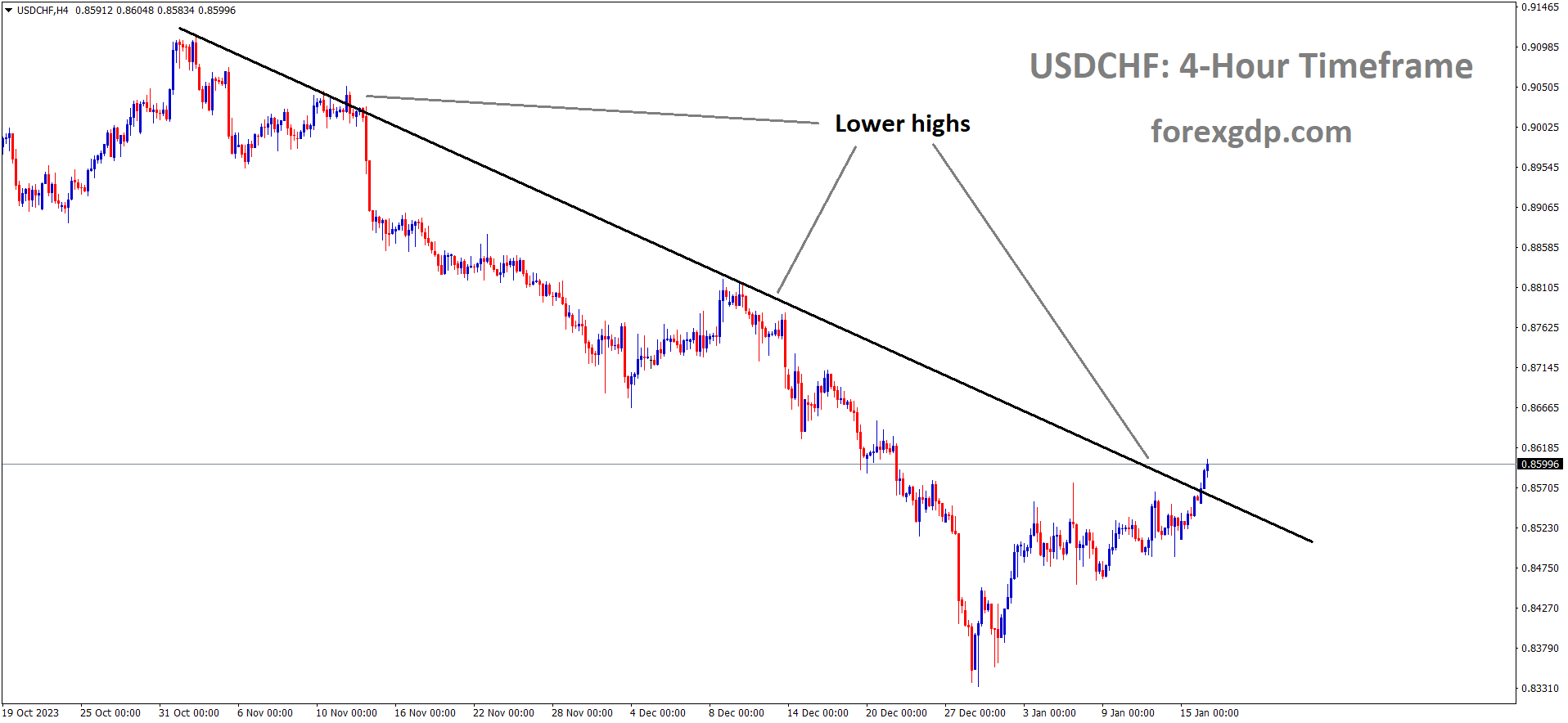
USDCHF is moving in the Downtrend line and the market has reached the lower high area of the trend line
On the final day, China and Switzerland successfully concluded a free trade agreement. This agreement is expected to be advantageous for China’s trade in both exports and imports with the Swiss economy. China holds the position of being Switzerland’s third-largest trading partner, following the United States and the European Union.

China and Switzerland, on Monday, signed a joint declaration to strengthen their partnership after a meeting between Premier Li Qiang and Swiss President Viola Amherd. This declaration includes finalizing a joint study to enhance their existing free trade agreement, marking a significant step towards possible negotiations. It’s worth noting that China is Switzerland’s third-largest trading partner, following the United States and the European Union.
EURCHF Analysis:
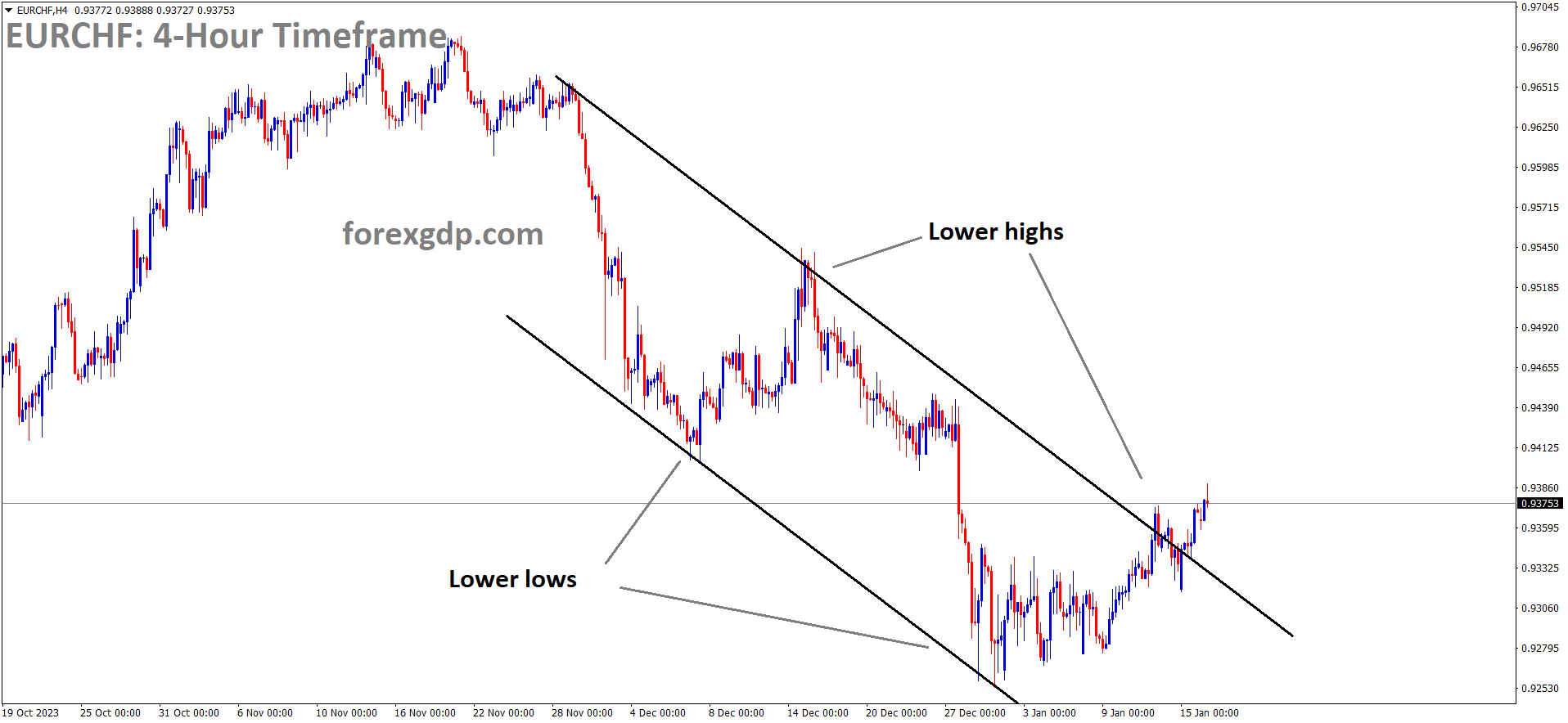
EURCHF is moving in the Descending channel and the market has reached the lower high area of the channel
The two countries initially signed a free trade agreement in 2013, which was China’s first such agreement with a continental European economy. However, previous efforts to update it had faced challenges, including concerns about China’s human rights record. The renewed dialogue between the Swiss and Chinese foreign ministries will address various topics, including human rights. During their meeting, Li and Amherd also discussed issues such as Russia’s conflict with Ukraine and the Israel-Hamas conflict.
EURUSD Analysis:
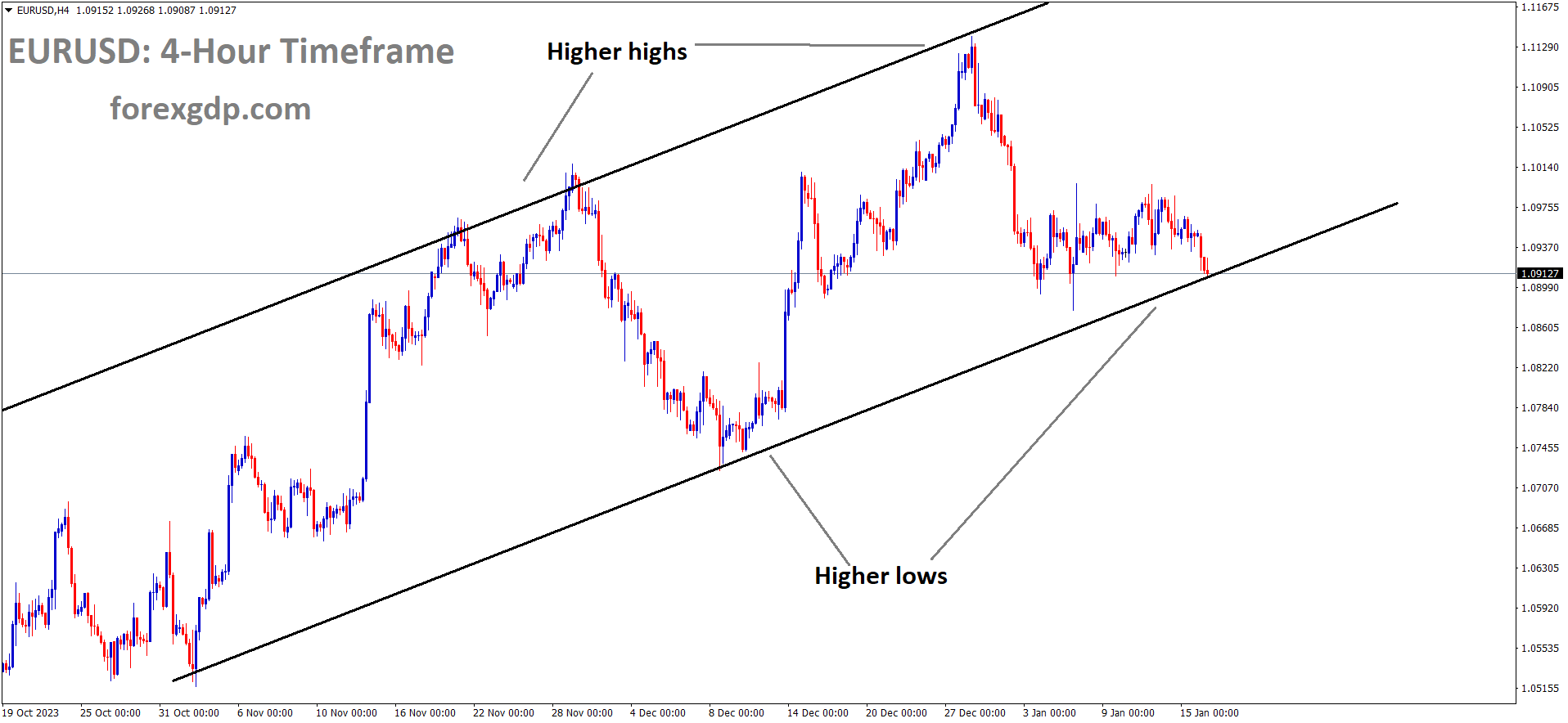
EURUSD is moving in an Ascending channel and the market has reached the higher low area of the channel
Francois Villeroy De Galhau, the Vice President of the ECB, has stated that it is premature to announce triumph over inflation in the Eurozone. Inflation is expected to decelerate on both sides of the Atlantic, and the current elevated rate is considered sufficient at this point.

Addressing the audience at the World Economic Forum in Davos this Tuesday, Francois Villeroy de Galhau, a member of the European Central Bank Governing Council and the President of the Bank of France, expressed the view that it is premature to claim a decisive victory over inflation. He pointed out that there are signs of a smooth economic adjustment on both sides of the Atlantic, and therefore, there should be no rush to raise interest rates beyond their current levels.
EURJPY Analysis:
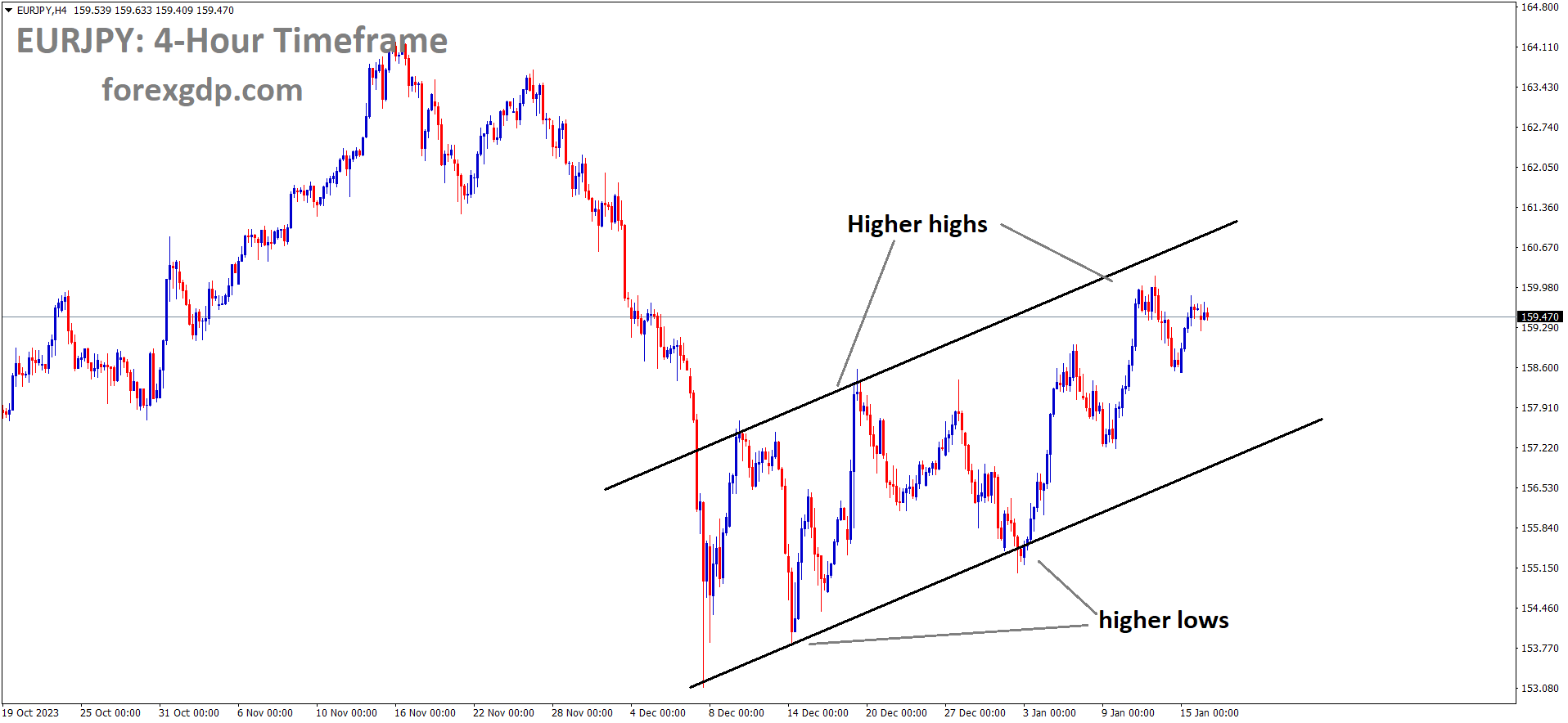
EURJPY is moving in an Ascending channel and the market has reached the lower high area of the channel
In December, the Japanese Producer Price Index (PPI) registered a growth of 0.30%, compared to the 0.20% increase observed in November. Bank of Japan Governor Ueda has emphasized that a 2% inflation target must be achieved before considering any adjustments in the monetary policy, whether it be easing or tightening.
Data released by the Statistics Bureau of Japan on Tuesday revealed that the country’s Producer Price Index experienced a 0.3% month-on-month growth in December, surpassing the November figure of 0.2% and exceeding expectations of 0%. On an annual basis, the PPI remained unchanged in December compared to the previous reading of a 0.3% increase, which was higher than the market consensus of a 0.3% decline.

Bank of Japan (BoJ) Governor Kazuo Ueda emphasized the importance of maintaining an ultraloose monetary policy while awaiting further data to gauge the persistence of inflation. He also mentioned that the central bank would abandon negative rates when it becomes reasonably certain of achieving sustainable 2% inflation.
In addition to economic developments, there have been reports of Iran’s Revolutionary Guard providing support to Houthi militants in Yemen. This escalating situation in the Middle East could lead to an increase in safe-haven flows, benefiting the Japanese Yen.
GBPNZD Analysis:
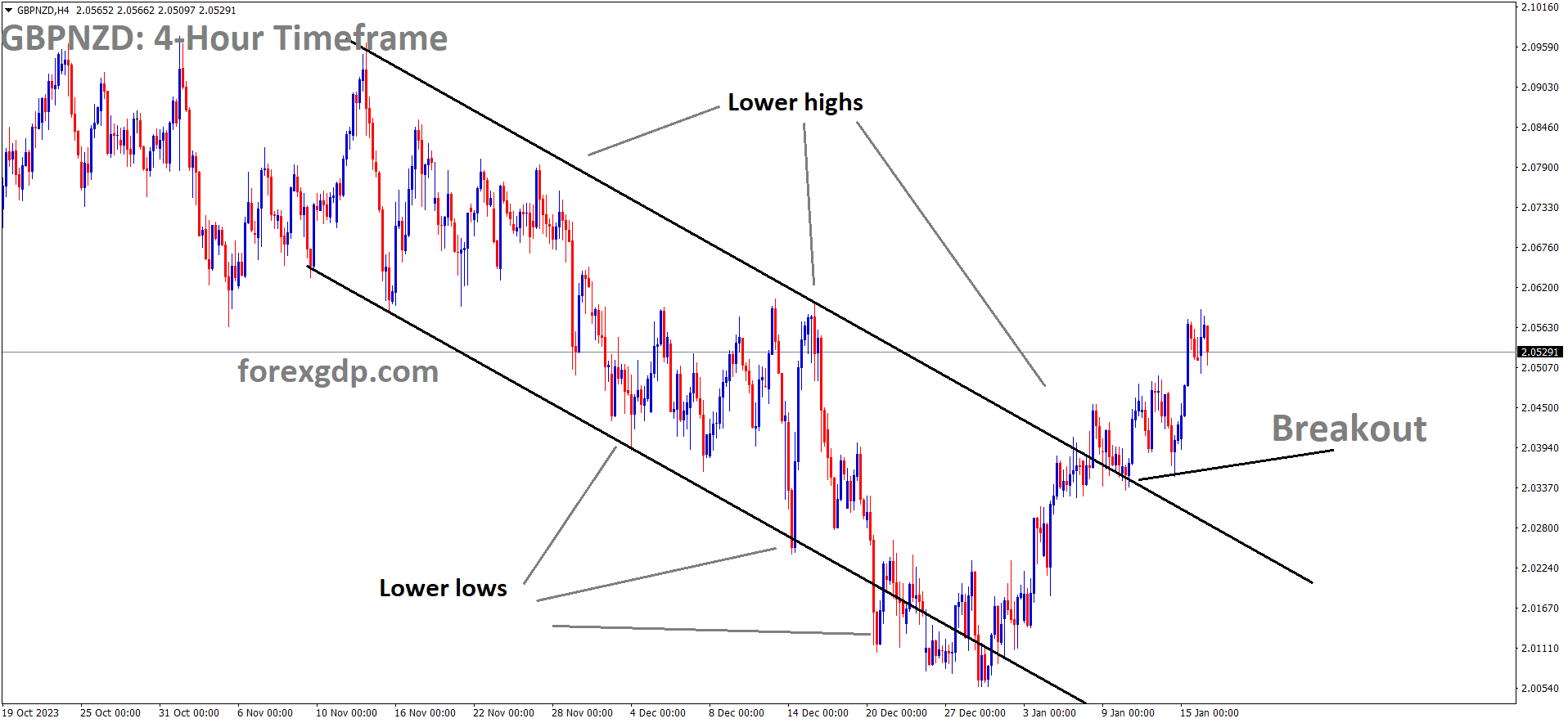
GBPNZD has broken the Descending channel in upside
Increasing geopolitical tensions in the market have led to a weakening of the New Zealand Dollar. The NZIER Business confidence data for the fourth quarter showed a reading of -2.0%, an improvement from the -5.2% figure reported in the previous quarter.
Rising geopolitical tensions in the Middle East are the focal point of market sentiment on Tuesday. According to Iranian state media, Iran’s Group launched missiles at targets in northern Iraq, with one of the ballistic missiles hitting near the US Consulate in Erbil, Iraq. As a result, the prevailing uncertainty and geopolitical turmoil may bolster safe-haven assets like the US Dollar while putting pressure on riskier assets such as the New Zealand Dollar.

Switching gears to New Zealand, the NZIER Business Confidence for the fourth quarter, as reported by the New Zealand Institute of Economic Research on Tuesday, improved significantly to -2.0% from the previous quarter’s -52%. Nevertheless, this positive figure failed to lift the Kiwi, as traders adopted a cautious stance. Looking ahead, the US NY Empire State Manufacturing Index for January is set for release later on Tuesday. On Wednesday, there will be a keen focus on Chinese economic data, including Q4 Gross Domestic Product, Industrial Production, and Retail Sales. Additionally, US Retail Sales data is slated for release on Wednesday. To cap off the week, the New Zealand Business PMI report will be published on Friday. These forthcoming figures have the potential to provide clear direction for the NZD.
AUDUSD Analysis:
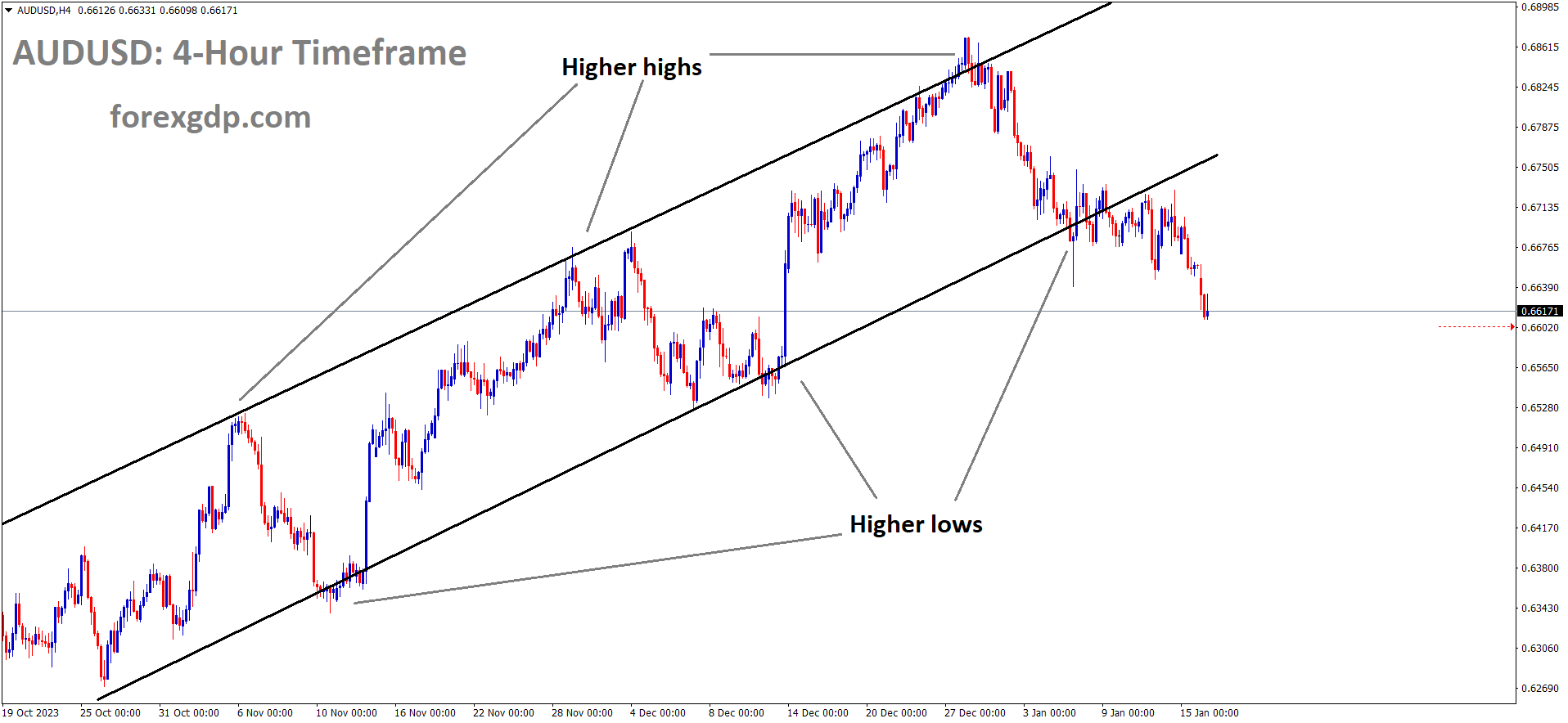
AUDUSD is moving in an Ascending channel and the market has reached the higher low area of the channel
The Westpac consumer confidence data for January in Australia indicates a decline of 1.3%, in contrast to the 2.7% growth observed in December. Following the release of this data, there has been increased skepticism among economists and analysts regarding the Reserve Bank of Australia’s confidence in a potential interest rate hike in February.
The AUDUSD pair is under downward pressure following the release of Westpac Consumer Confidence data for January, indicating a contraction. This development may fuel the sentiment that the Reserve Bank of Australia won’t pursue further policy tightening in its upcoming board meeting in February. The Australian Consumer Confidence, as reported by the Faculty of Economics and Commerce at the Melbourne Institute, declined by 1.3%, in contrast to the previous 2.7% increase.
Nevertheless, on Monday, the TD Securities Inflation data for December showed an increase, which may have mitigated losses for the Australian Dollar. The US Dollar Index started the Tuesday session with a gap-up, buoyed by robust US Treasury yields. Investors seem to be regaining confidence in the US Dollar, following hawkish remarks from Atlanta Federal Reserve (Fed) President Raphael Bostic over the weekend.

According to the Financial Times, President Bostic suggested that premature interest rate cuts by policymakers could lead to inflation fluctuations. He cautioned that the descent of inflation towards the central bank’s 2.0% target might slow in the coming months. The US Dollar is gaining ground due to risk aversion stemming from the geopolitical conflict between Israel and Gaza, which has caused disruptions in Red Sea trade. The Iran-backed Houthi group has persistently targeted maritime vessels, despite recent military strikes by the United States and the United Kingdom on Houthi sites in Yemen.
Traders will closely monitor the US NY Empire State Manufacturing Index for January and a speech by the Federal Reserve’s Waller later on Tuesday. Additionally, Chinese Gross Domestic Product and Retail Sales data are scheduled for Wednesday.
In Australia, TD Securities inflation increased by 5.2% YoY in December, up from 4.4% in November. Job advertisements in Australia improved by 0.1% in December, reversing the previous 4.6% decline. The People’s Bank of China maintained its medium-term facility rate at 2.5%, raising expectations of a Reserve Requirement Ratio reduction in the following month. In December, the Chinese Consumer Price Index (YoY) decreased by 0.3%, contrary to the expected 0.4% decline. The monthly Consumer Price Index eased to 0.1%, compared to the market expectation of 0.2%. The yearly Producer Price Index fell by 2.7%, slightly exceeding the expected decline of 2.6%.
Barclays revised its forecast for the first Federal Reserve (Fed) rate cut, moving it up to March from June. In a note released on Friday, Barclays analysts expressed their expectation for the Federal Open Market Committee to reduce the Fed Funds rate by 25 basis points at the March meeting. The US Bureau of Labor Statistics reported that the December Producer Price Index (PPI) figure was 1.0% year-on-year, compared to the previous reading of 0.8%. The Core PPI YoY arrived at 1.8%, down from 2.0% in November. On a monthly basis, both the headline and Core PPI indices remained unchanged at -0.1% and 0.0%, respectively.
The US Bureau of Labor Statistics also reported that the Consumer Price Index surged to 3.4% YoY in December, surpassing both November’s 3.1% and the market’s expected figure of 3.2%. The monthly CPI growth for December showed a 0.3% increase, exceeding market analysts’ estimated projection of 0.2%. The annual Core CPI stood at 3.9%, a slight decrease from November’s 4.0%, while the monthly figure remained steady at 0.3%, in line with expectations.
Don’t trade all the time, trade forex only at the confirmed trade setups.
Get more confirmed trade setups here: forexgdp.com/buy/

